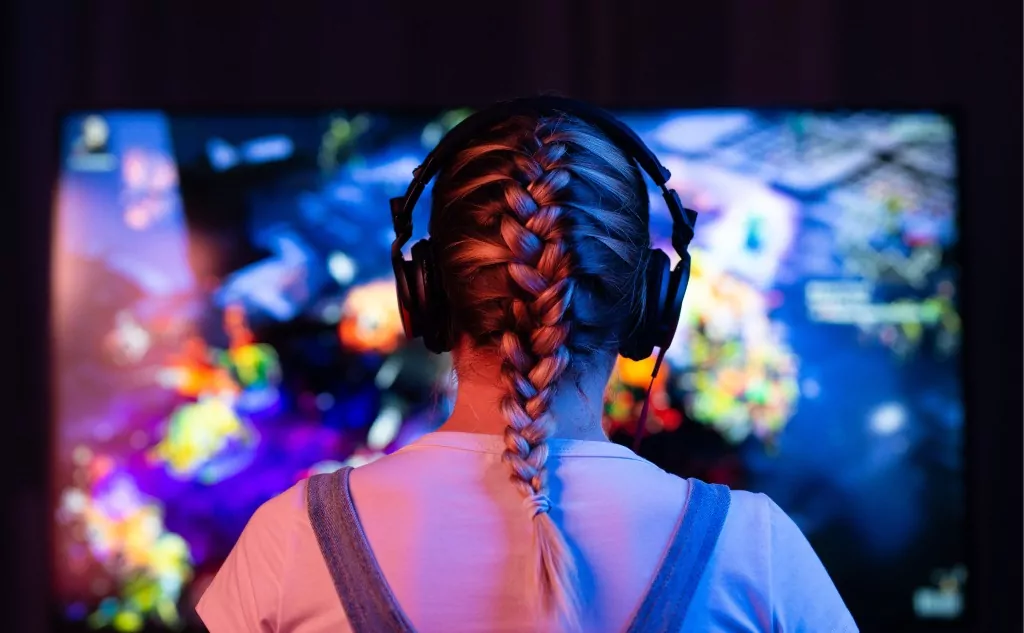Here’s how much data your PlayStation uses:
It depends on how you use your PlayStation.
If on the heavier side, like downloading and playing games, you need 100 GB for the installation of games alone like Call of Duty.
Your data usage for game-playing is a different story. Streaming shows uses anywhere between 1 GB and 7 GB an hour, depending on video quality.
So if you want to learn all about how much data your PlayStation uses in your case, then this article is for you.
Let’s jump right in!
- Speechify: Safe to Use?
- Working From Home Data Usage: How Much?
- Podcast Data Usage: How Much?
- Xbox Data Usage: How Much?
- How Much Data Does Eve Online Use?
- How much data does world of warcraft use? Find OUT!
- Snapchat Data Usage: How Much?
- WhatsApp Data Usage: How Much?
- Discord Data Usage: How Much?

How Much Data Does a PlayStation Consume? (2 Scenarios)
Even though it wasn’t always the case, we’re now all used to playing online with our gaming consoles.
PlayStation (PS) may not have been a pioneer in the world of multiplayer games like other devices such as Sega Dreamcast, but it’s now hard to imagine playing offline on your PS, even if you’re mostly a single-player type.
Some of those lucky few who managed to get their hands on the new PlayStation 5 have talked about exceeding their data caps.
The topic of data spending is getting increasingly relevant for those who have limited internet packages.
So, what makes your console spend the most data?
How close to your limit are you getting when your kids are yelling excitedly during an average game of PlayerUnknown’s Battleground (PUBG)?
How are the numbers looking for other PS’s features?
#1 Downloading and Playing Games
These are, of course, the most obvious reasons for getting a PlayStation.
So we’re starting with gaming.
Sure, the new PS5 is looking extra sharp, but you’re not exactly going out of your way just to match something with the new TV.
If you’re playing digital-only, downloading the games and amassing a formidable local library of titles can quickly eat up your data plan.
Especially when we’re talking newer AAA hits—a lot of them take up upwards of 50 GB, not to mention the frequent updates and patches (many games now come with a day one patch, which already adds 10s of GBs to the sum).
Here are some of the popular games that are on the heavier side with over 100 GB needed for installation:
- Call of Duty: Modern Warfare–more than 170 GB
- Destiny 2–more than 160 GB
- Red Dead Redemption 2–about 105 GB
- Final Fantasy XV–102 GB, with an additional 50+ GB for the multiplayer expansion
- Call of Duty: Black Ops 3–about 101 GB
The updates are not reserved for online games only.
Even if you decide to play your game from the disk and not engage in any multiplayer activities, you still have to download occasional updates.
If your data cap is set low, it’s probably a good idea to turn automatic updates off.
To do this, navigate to the Settings from your home screen (it’s placed on the right just before power options), scroll down to the System tab, click on the Automatic Downloads and uncheck the box next to Application Update Files.
Playing your games online also takes up data, but it’s not that harsh on your data package limit compared to downloading.
The most taxing ones, such as Destiny, go up to 300 MB per hour, but many keep it under 100 MB.
For example, PUBG as we mentioned before only needs about 40 MB for an hour of playing.
Fortnite comes in around 110 MB even with voice chat involved (which also uses data, but it shouldn’t amount to more than 20-30 MB per hour if there aren’t 10+ people talking at the same time, and we hope your games aren’t like that).
Finally, there is also PlayStation Now, which is a cloud gaming service that allows you to stream games from PS2, PS3, or PS4.
Even though it sounds similar to simple online gaming, it actually uses up a lot more data, as the streaming is done in 720p quality, meaning you can expect more than 1 GB per hour for this type of experience.
So gaming this way is not very practical for those with a data cap.
#2 Other Forms of Entertainment

While we’re on the topic of streaming, this is another important part of the console experience you need to think about data-wise.
Even though gaming is its primary offering, many apps available on PlayStation certainly expand its capacity as a one-stop shop for entertainment purposes.
From music streaming apps such as PlayStation Music and Spotify, over the obvious powerhouses for streaming video content such as Netflix and Twitch, all the way to VR and editing apps, there are a lot of ways to use your PlayStation, as well as your data.
If you’re going to use the PS for watching your favorite shows, keep in mind that services such as Netflix can be quite demanding if you’re dealing with a data cap.
This mostly depends on the quality of the video—if you’re watching SD, it goes up to 1 GB per hour, Full HD will need anywhere from 1 to 3 GB, while 4K Ultra HD can get all the way to 7 GB an hour, which is a lot of Call of Duty playtime compared to an episode of Stranger Things.
You can always tweak the settings to make it more data-saving friendly, but both streaming and downloading will take up some data either way.
Similarly, if you decide to take up streaming on YouTube or Twitch from your console, it could use 2 or 3 GB of your bandwidth per hour, also depending on the quality.
The lowest quality streams could go below 1 GB per hour, but it’s probably not the best way to get your audience with below 720p shows.
Keep in mind that you also need to consider your internet speed as well if you want everything to go smoothly.
Using your PlayStation as a music device can also, surprisingly, eat up some data, so you need to keep this one in mind if you’re near the end of the month and you’re trying to avoid hitting the cap.
When it comes to streaming services such as Spotify, the approach is similar to video streaming—the bigger the quality, the more bandwidth it needs.
Fortunately, it’s not as taxing as Netflix, for example, but it does work in the range of online gaming.
A song could go from 0.5 MB to 8 MB, bringing the total to around 150 MB for an hour of high-quality listening experience.
Overall, if you’re using many apps, it would be a good idea to go about it the same way as with the game patches and turn the automatic updates off.

